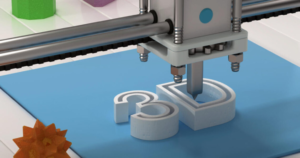Sugar Land SEO is an important skill that can help you get found by your customers. It is a constantly evolving practice that requires patience and dedication to see results.
SEO involves creating webpages, including articles, that search engines like Google index for use in searches. Search engine algorithms use factors like keywords, internal and external links, and optimized content to determine relevance.

Keywords are the foundation of SEO and are used to identify what search engine users want. They are the most relevant terms that describe what your brand offers and are the basis for a search engine’s indexing of your content. Choosing the right keywords is one of the most important aspects of SEO, and it can also be challenging. The best way to find keywords is to research your audience and what they are looking for.
The term “keyword” was coined by Raymond Williams in his book Keywords: A Vocabulary of Culture and Society (Fontana, 1976/1983). Williams defined a keyword as a socially prominent word that can bear overlapping and often contradictory meanings, and which are negotiated in day-to-day discourse. It is a sociologically informed and nuanced definition that differs from the more popular use of “keyword” as a commercially valuable search term.
SEOs still use keywords to inform content, but the way they do so has changed. Rather than focusing on keywords alone, they focus on the overall user experience and what keywords will provide them with the most value. Then they optimize their content to match the results that search engines deliver.
There are several metrics to consider when choosing keywords, including search volume, difficulty, and organic CTR. A good strategy is to find a combination of keywords with high search volume and low difficulty. This will help your content rank higher in search results, driving more traffic to your site.
Singular keywords are difficult to target, and can be infuriatingly vague. For example, if someone searches for “clothing,” it is hard to determine if they are looking for boutique clothing stores, information about clothes, or just a place to shop. To overcome this, SEOs must understand what their audience wants, and produce content that meets their needs.
SEOs must constantly test and refine their keyword strategy. If they don’t, they risk wasting time and resources. They may end up missing out on traffic or draining their budget by targeting the wrong keywords. It is also crucial to keep a document of all potential keywords and update it regularly.
Content
Content plays an important role in SEO. It helps search engines understand what your website is about, and it also attracts more organic traffic. Content can be written or visual, and it includes blog posts, articles, videos, infographics, and more. By creating quality content that is relevant to your target audience, you can improve your SEO and increase the number of organic searches.
SEO is a set of techniques used to promote a website on search engine results pages (SERPs). It includes keyword research, content creation, and link building. It is an essential part of any online marketing strategy. However, it is important to remember that SEO techniques can change over time, and you should be sure to keep up with the latest developments.
In the past, SEO was a technical field that focused on keywords and meta tag placement. Today, it’s a much more holistic practice that encompasses the entire web page, including its text, images, and video. This is because search engines like Google are now evaluating the quality of a website’s content, not just its handling of keywords.
While content is not an absolute must for SEO, it is an integral component of any online marketing campaign. It provides relevance to a website’s subject matter, improves user experience, and increases traffic. Content can be written or visual, but it should always be relevant to a business’s target audience.
In addition to attracting organic search engine traffic, high-quality content can also help establish your company as a trusted source of information. This will build trust with potential customers and encourage them to return. It can also make them more likely to share your content with their friends and colleagues, which can further increase your visibility.
The importance of content in SEO is not going away any time soon. In fact, it’s becoming increasingly more critical to the success of any online business. Without it, your website will be invisible to prospective customers. Fortunately, there are a variety of tools available to make the process easier. These tools can be used to find the right keywords, optimize your content, and track your progress.
Link building
Getting links on the internet is an essential part of search engine optimization (SEO). They help increase the visibility of a website and give it more authority in its niche. It also allows people to share the content of a page with others. This can lead to a significant increase in traffic from new sources. However, it is not an easy task. Link building requires a lot of work and research to succeed.
A great way to build links is by creating content that is valuable to your target audience. This will attract other websites to link back to your site. You can also use keyword research to find the keywords your audience uses to search for information. Once you know which keywords are relevant to your industry, it’s easier to create content that matches their needs.
Another way to build links is by reaching out to bloggers and publications in your industry. This can be a time-consuming process, but it can help you gain visibility and establish yourself as an expert in your niche. If you have an in-depth piece of research on an important topic, you can pitch it to a publication or blog and ask for a link back to your website.
The number of links a webpage has is one of the most important factors in Google’s algorithm. However, the quality of those links is equally important. To understand this, let’s look at some of the most common link building strategies and how they affect a site’s ranking.
In general, a webpage’s rank is determined by how many high-quality links it has. To determine the quality of a link, Google considers several different criteria, including its location on the web, anchor text, the context of the link, and the site that contains the link.
In order to achieve a top-ranking, it’s critical that you focus on building quality inbound links to your pages. This is because search engines such as Google place a large amount of value on the quantity and quality of inbound links. Using tools like the Link Building Explorer and Moz’s Domain Authority, you can easily identify potential link opportunities.
Analytics
Using SEO tools and analytics to track and measure your SEO efforts can help you make data-driven decisions that improve performance. This process includes tracking key metrics such as organic search traffic, keyword rankings, click-through rates, and conversions. By analyzing these metrics, you can optimize your content and website to boost visibility and drive more qualified traffic.
User behavior analysis is a critical component of SEO that helps you gain insights into your audience’s needs and preferences. This information will enable you to tailor your content and SEO strategy to meet those needs, resulting in improved user satisfaction and conversions. This is possible through a number of different techniques, including heatmaps and session recordings, which allow you to watch your audience interact with your website and content.
In addition to tracking and analyzing your own SEO performance, it’s also important to analyze the performance of your competitors. This will help you identify opportunities for improvement and stay ahead of the competition. This is possible through various online tools, such as Google Analytics, which allows you to customize your dashboards and create custom reports based on specific metrics.
Another important metric to monitor is your average time on site, which indicates how engaged your audiences are with your content. This can be an indicator of how relevant and informative your content is to searchers. In addition, you can use this data to identify pages that keep people on your site longer and optimize these pages accordingly.
In addition, you can use analytics tools to track your competitor’s SEO strategies and ranking position. This will help you identify gaps in your own SEO efforts and ensure that you’re using the most effective keywords, incorporating the right target phrases into your pages, and implementing proper technical SEO elements. You can also use analytics tools to analyze your competitor’s backlink profile, which will help you determine their link-building tactics and how they affect your SEO rankings. This will allow you to adjust your own links accordingly, which can have a significant impact on your rankings and overall visibility in the search engine results.





